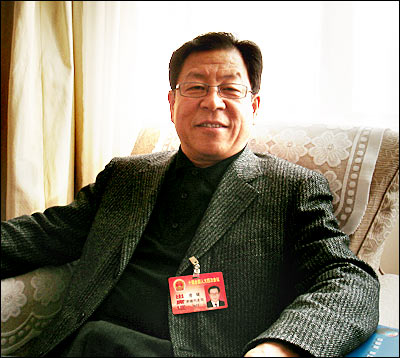| Tools: Save | Print | E-mail | Most Read |
| Oil City Mulls Restructuring Amid Capacity Expansion |
| Adjust font size: |
China should steadily expand either domestic oil output or import from foreign countries to meet its growing oil demand, Tang Jian, deputy of the Xinjiang delegation, told china.org.cn on Tuesday on the sidelines of the ongoing Fourth Plenary Session of the 10th National People's Congress (NPC).
Tang is the secretary of Karamay Municipal Committee of the Communist Party of China (CPC) in Xinjiang Uygur Autonomous Region, and director of the Xinjiang Oil Administrative Bureau under China National Petroleum Corporation (CNPC). To help ease the country's insatiable demand for oil driven by the rapidly growing economy, Karamay, one of the country's major oil production bases, is stepping up oil prospecting work and steadily expanding oil capacity. First put into production on October 29, 1955, Karamay Oilfield has reported output growth for 25 consecutive years. "Crude oil outputs have grown steadily over the past three years, generating 11.1 million tons, 11.7 million tons and 12 million tons respectively," Tang said. Table: Output of Karamay Oilfield in Past Several Years
Xinjiang, with its advantageous location because it shares borders with eight countries, serves as a bridge for a secured oil supply from Central Asian countries. Moreover, the Atasu-Alataw Pass section of the China-Kazakhstan oil pipeline was completed last December. Tang noted: "The pipeline will stretch to Dushanzi, Karamay, where an oil refinery factory with annual processing capacity of 10 million tons has been planned." As a result of soaring oil prices, Karamay's gross domestic product (GDP) last year was 38.5 billion yuan (about US$4.78 billion), 30 percent higher than the year before. But, worries still remain because the exhaustible resources contradict the concept of sustainable development adopted by the central government. These days, more consideration is being given to the reasonable tapping of oil resources, diversifying the economic structure and environment protection. According to Karamay Municipal Bureau of Statistics, the agriculture, industry and service sectors account for 0.4 percent, 89.1 percent and 10.5 percent respectively of the city's GDP. Among them, "the production value of petrochemical sector accounts for 85-90 percent of the city's total." Although the city's oil resources are expected to last for about 100 years, the local government is determined to reduce its dependence on a single industry. "Environment protection should be given priority so that a balance between oil-extracting and the local environment can be achieved," Tang said. "The speed with which we extract oil should be kept within the limits of a scientific outlook on development. "We have raised the issue of economic restructuring for mass deliberation, and hope that we can find a substitute industry." However, Tang admitted that this would prove to be a long-term project. "We are still in the period of exploration," he concluded. Background: history of the development of Karamay Oilfield October 29, 1955 Karamay Oilfield, the first big oilfield discovered after the establishment of the People's Republic of China in 1949, was put into operation. June 4, 1958 First batch of finished oil products were transported from Dushanzi Oil Refinery Factory. May 23, 2001 The third national resources evaluation project draws the conclusion that the oil and natural gas deposit in Junggar Basin is expected to reach 10.259 billion tons. December 24, 2002 Its yearly output of crude oil surpasses 10 million tons. (China.org.cn by staff reporter Tang Fuchun, March 10, 2006) |
| Tools: Save | Print | E-mail | Most Read |
 |
| Related Stories |
|
| Product Directory China Search |
Country Search Hot Buys |
